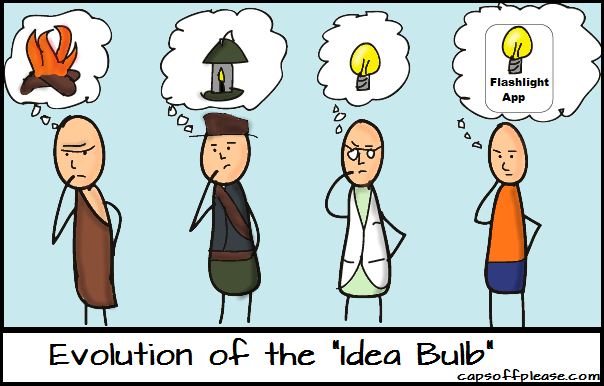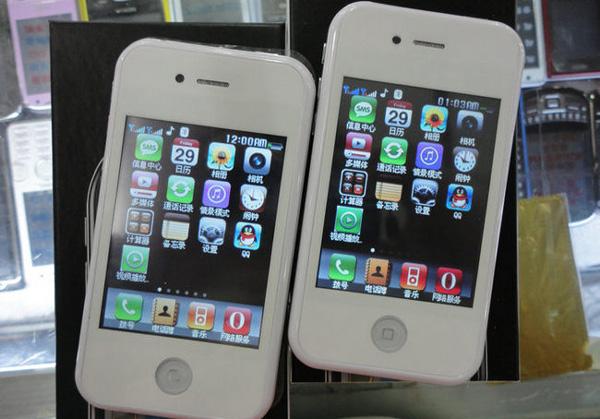There is nothing wrong with "stealing" ideas, it is outright "copying" that is bad
This article may contain personal views and opinion from the author.

In reality, the whole copy shaming should be cooled down a bit, because “idea borrowing” is in the core of human creativeness and is actually good for progress.
It's in the way we create

An Early Hall Braille typewriter employing the piano keyboard concept"
Notice that in this short arc of a story, our protagonist didn't really come up with something entirely original, rather – they combined other people's artistic ideas in an original way. Don't feel bad for the sources, though, because their own creations were probably conceived in the same manner. It is just how we are – when one comes up with an original creation, the rest of us copy it, repeat it, and combine it with other concepts for a painful amount of times. It is very rare that someone actually invents something entirely new, and history tells us that such people are usually ahead of their time and unlikely to be understood by their peers.

Get to the point
Enough going off on tangents – let's cut to the chase. As I previously mentioned – “borrowing” of ideas in the smartphone world is a very common thing nowadays. Many people are quick to jump on the “copycat blame” train, which often results in endless flame-wars over who copied who first. A lot believe that imitation is a sign of a lack of innovation in the industry. I dare argue that point.
Leaving cheap-o carbon copies aside, every manufacturer that gets their function and design cues from the “big boys” does it in their own way. Samsung's Galaxy S6 does resemble an iPhone 6, true, but it is much more than that – its sides are flattened for an easier grip (compared against the oval sides of the iPhone 6), its back is covered in glass, echoing a trend that Apple abandoned back in 2013, and its display is still larger. OnePlus 2's home button really, really looks like the one on Samsung's flagship, but it's actually a touch-pad that can be programmed to quick-launch different apps – taking Sammy's “dual press for camera” concept a step further.
Look at it another way – the manufacturers are under a lot of pressure. They need to design something that sort of, kind of, maybe looks like a successful product that the general public favors and desires. Then, said manufacturer needs to put in the extra thought that will actually differentiate its creation, set it apart and place it in its own niche. It is in this process that true innovation can be found, and anyone who pulls it off should be considered creative.
That's how it goes – when someone's good idea goes out into the world, it gets copied, it gets tweaked, expanded upon, and meddled with. It gets its own “life” of sorts, and starts developing when jumping from one inventor's noggin to the other. Just take a look back at how Android and iOS have been borrowing from one another throughout the years. Whatever technology it is, eventually, it reaches a peak – a place from where it can't evolve much further, and it becomes a standard – something that we are so used to that we can't imagine anyone building it in any other way. Said standard is no longer called a stolen concept – it is the result of years of bouncing back and forth between different competitors who, in their constant rivalry, have managed to develop it, push it, and perfect it.
Now, looking at the cut-throat market of today, who would be willing to take such a risk? That's right – nobody. The bottom line is that until the market gets over-saturated, tech advancements slow down, and sales chill out, there will be no need for anybody to make such a “make it or break it” attempt. In fact, everyone is so infatuated with the current type of smartphone, which is still in its evolution state, that I am not even certain if anyone has the imagination to actually come up with something vastly different. For that reason, we are stuck with companies re-making and re-imagining the same successful formula over and over. And, it just so happens that a “successful formula” for a smartphone is determined by a popularity contest... and we all know who's been winning that for a while now.
This absolutely does not mean that carbon copies are OK
Let me just make it clear that companies that try to turn a quick buck by building a carbon-copy product with junkyard parts irk me as much as the next guy. Also, I am no fan of naming scheme copying – the fact that so many phablets that come from Chinese manufacturers are dubbed "Note" just rubs me the wrong way (not even going to mention the MiPad... oh, wait – I did).

Not everybody reads up on tech news, not everybody follows the smartphone market closely, and there are relatively few people out there in the world, who understand the rule that "If it looks too good to be true – it probably isn't" (in the context of seeing a super cheap price-tag on a top-tier smartphone). Users who get duped into buying a counterfeit Galaxy S6 may eventually find out that they have been sold a potato, but the fact remains that, from now on, their brain will be hardwired to doubt Samsung products – because the only “real” experience they've had with one would actually be this pretty “fake” one. Users who buy the “Super-awesome iCommunicator Note” may learn to associate the word “Note” with “paperweight-that-looks-like-a-phone”, which puts Samsung's Note line in danger of losing potential buyers.













Things that are NOT allowed: